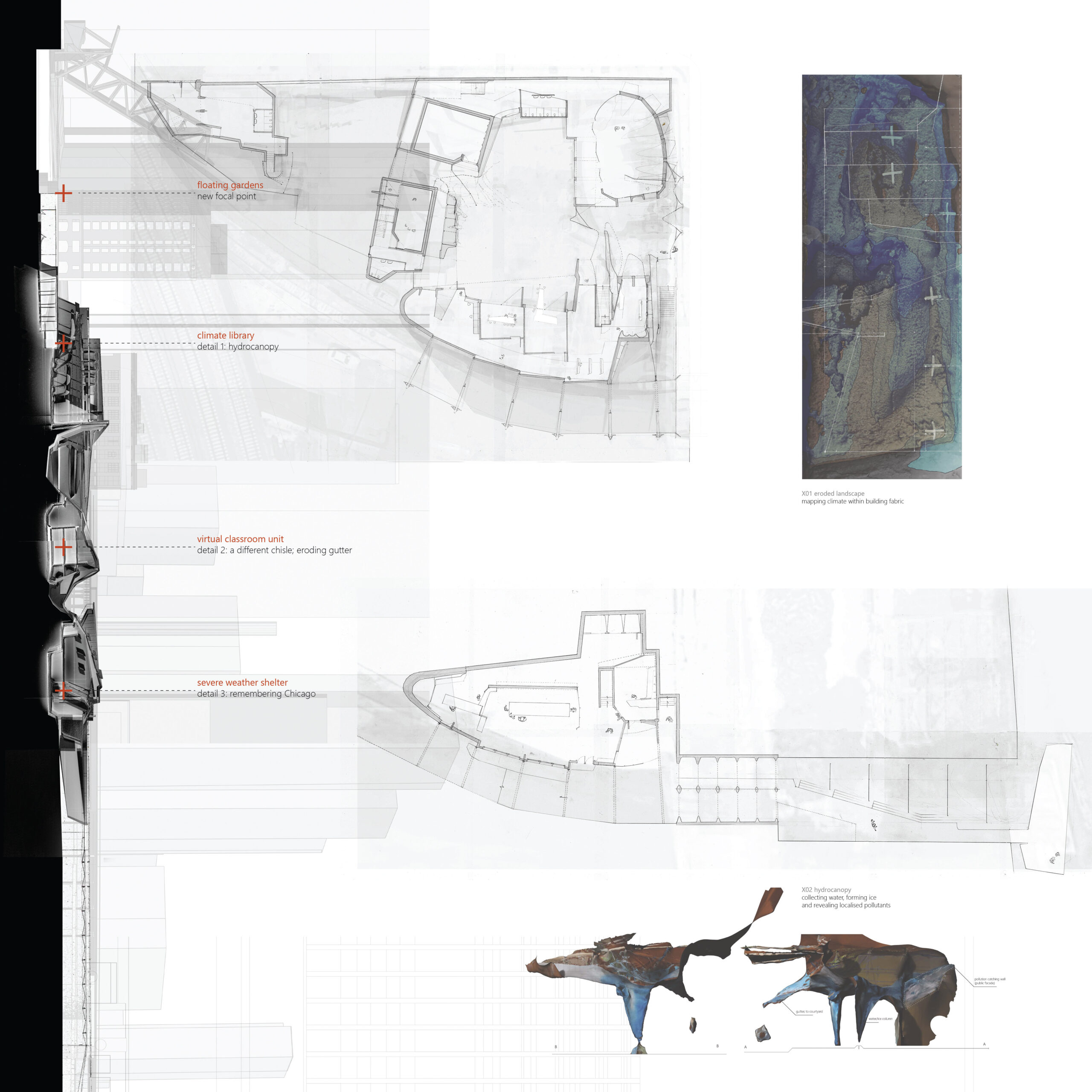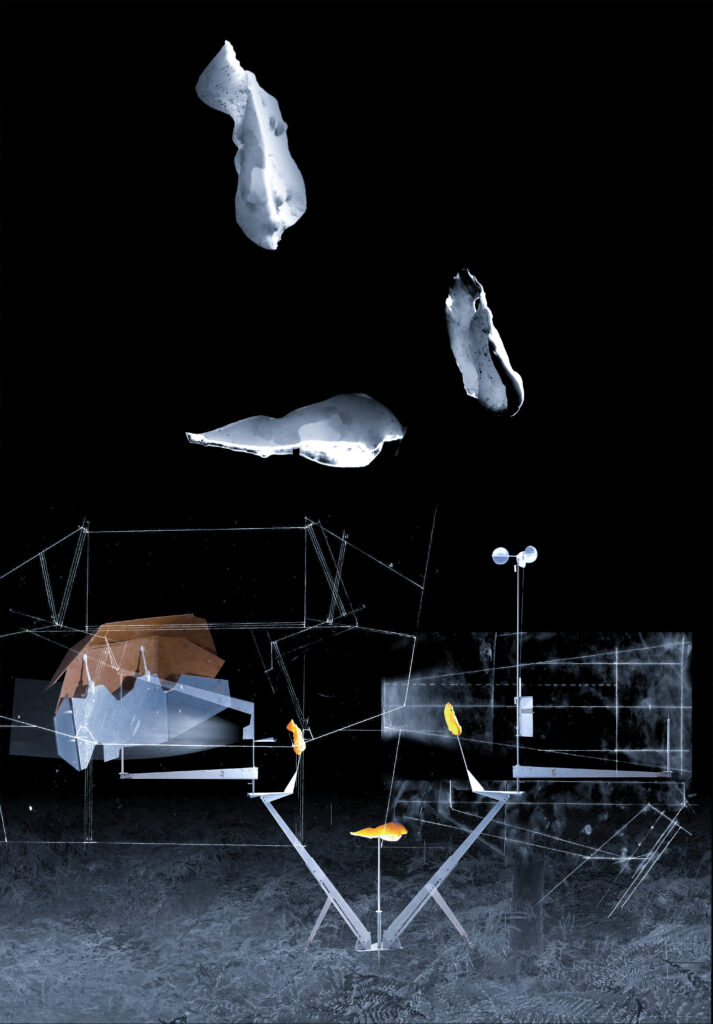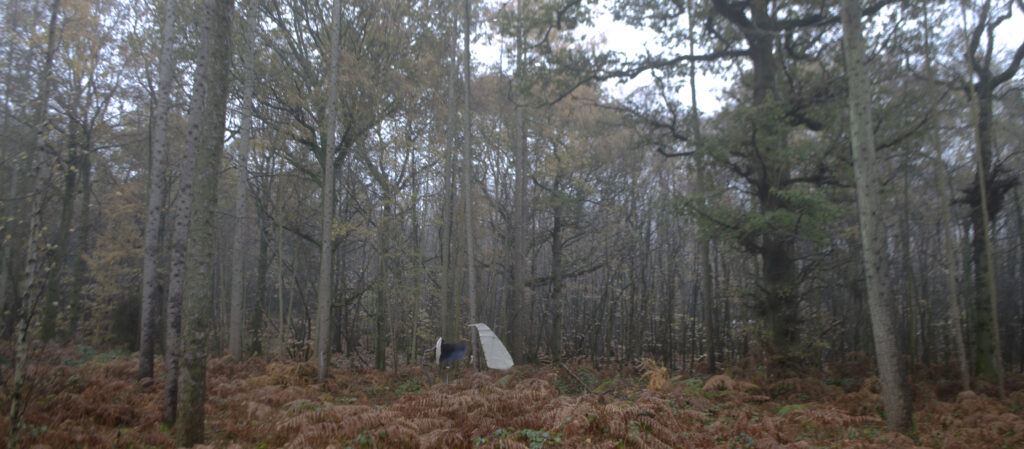MILON THOMSEN 2019-20 YEAR 3
To See The World in a Grain of Sand
First Class Honours
Like education, architecture must change. And so, this primary school – a teller of truth – is also an environmental observatory. As virtual reality learning erodes established ideas of schooling and accelerates student experience of time, the building opts to also bear witness to the slow pace of climatic shifts. Immersing the students in the experience of the outside environment, the school also serves as a weather station, mapping and adaptation to ever more extreme conditions of precipitation and drought.
The landscape of the school plants a seed for wider urban change, acknowledging the gravity of early childhood experience in shaping new behavioural patterns, preaching an environmental consciousness alien to much of the consumerist and disembodied American city. The architecture stretches across its urban site between railroad and river, creating a new spine that connects the neighbourhood with the nearby downtown district.
The experience of the weather becomes the key driver of the design. Within sunken courtyards, precipitation and wind are monitored via architectural sandscapes that map and adapt spatially in a flow of learning between the virtual, the real, the city, and the child. Through a physical and digital simulations, the agency of local materials to expose, amplify and remember – weathering – was explored. These studies inform the construction of the school buildings, utilising methods of erosion, binding, and fixing to record the long-term changes in Chicago’s climate. As nature returns to the site as the seeds of the prairie winds settle, the school becomes an observatory to the regenerative power of education.
Tutors: Greg Storrar, Farlie Reynolds



